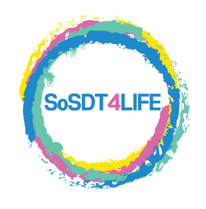The month of October has been designated as “Pink Month” to raise awareness about breast cancer. Pink Month is a time for people to learn more about breast cancer, including its early warning signs and symptoms. Every October, people around the world participate in Breast Cancer Awareness Month (BCAM) to raise awareness and funds for breast cancer research. Read through this blog to stay informed about the deadly disease.
Breast cancer is most common among women worldwide. The disease affects approximately one in eight women and claims the lives of approximately one woman every thirteen minutes. Seniors are at the highest risk for developing breast cancer because their cancer risk rises sharply with age.
In observance of National Breast Cancer Awareness Month, we’re providing some information that senior women will find useful in dealing with this disease. SPDT4Life would like to raise awareness about the disease that affects so many, especially the elderly, and explain why early detection is so crucial.
The Importance of Raising Breast Cancer Awareness Among Seniors
In breast cancer, malignant (cancerous) cells form within the breast. These cancerous cells invade healthy breast cells but can spread to other parts of the body through blood vessels or lymph vessels. When cancer cells damage other tissues, it’s called metastasis.
Other facts:
- Half of newly diagnosed breast cancer cases are in women over 60. About 20% are women over 70
- 1 in 8 women will develop breast cancer, and 1 in 1,000 men will as well
- The risk of developing breast cancer nearly doubles if a first-degree relative has a history of the disease. But less than 15% of breast cancer patients have a family member with the disease
Preventative Measures:
Mammogram: Mammograms are the most common way to detect breast cancer. The American Cancer Society recommends annual mammograms starting at 45 and continuing until 55. After 55, women can get biannual mammograms.
Self-Checkup: Even though a mammogram can often find tumors or cancerous cells before they can be seen with the naked eye, many doctors still recommend that women do self-exams. The following are some ways to conduct a self-checkup:
- Put your arms down by your sides and look at yourself in the mirror. Check for skin bulges, inverted or protruding nipples, and redness or rash in the area.
- Raise your hands above your head and observe the same signs.
- During these two examinations, pay attention to whether or not your breasts are leaking any fluid.
- While laying down, circle your nipples or go from top to bottom to feel all your breast tissues. Look for abnormalities.
- You can do this test seated or standing.
All breast lumps aren’t cancerous. Some are “benign” and won’t spread. They can still indicate a higher risk of breast cancer. Regardless, they should be examined by a specialist.
If you find a lump in your breast or suspect breast cancer, see your doctor immediately. Early detection increases the chance of a quick recovery.
Taking Precautions Against Breast Cancer
It is true that breast cancer cannot be “prevented,” but there are many healthy lifestyle choices that women can make to reduce their risk of ever being diagnosed. Here are some tips for improving your health and way of life:
Healthy Diet: Women who eat fruits and vegetables high in carotenoids have a 19% lower risk of breast cancer. Keeping a healthy weight helps prevent breast cancer. Therefore, eat a healthy, balanced diet.
Exercise: Staying active as you age is one of the best ways to manage your weight. A study by the American Cancer Society found that women who gained 21 to 30 pounds after age 18 were 40% more likely to get breast cancer than women who maintained their weight. Regular exercise reduces breast cancer risk for women of any body type.
Avoid Hormone Therapy (HT): Hormone therapy was once a common treatment for hot flashes. Long-term estrogen plus progestin use increases breast cancer risk by 24%.
Quit Smoking and Limit Alcohol Use: Research shows that smoking and excessive alcohol use increase breast cancer risk. Limiting alcohol consumption reduces the risk of breast cancer and other diseases. Smoking and alcohol use increase breast cancer risk.
Why is breast cancer awareness important?
The month of October was designated as National Breast Cancer Awareness Month to honor those who have been impacted by the disease and to raise awareness of it. By spreading awareness, we can help make the world full of survivors by making sure that women win every time.
The good thing is that breast cancer deaths are decreasing, thanks in part to the tireless efforts of numerous foundations, organizations, and individuals who have made it their mission to educate women. The survival rates of women with cancer have greatly improved thanks to increased public awareness and increased efforts to detect the disease at an earlier stage.
During Breast Cancer Awareness Month, we honor those who have overcome the disease, take the time to educate ourselves and others, and come together as a community to raise money and awareness for the fight against breast cancer. SPDT4Life is committed to providing the highest quality of care and support to patients all over the world. In addition to the more traditional approaches to cancer treatment, we also make use of various complementary and alternative medicine approaches.

Leave A Comment
You must be logged in to post a comment.